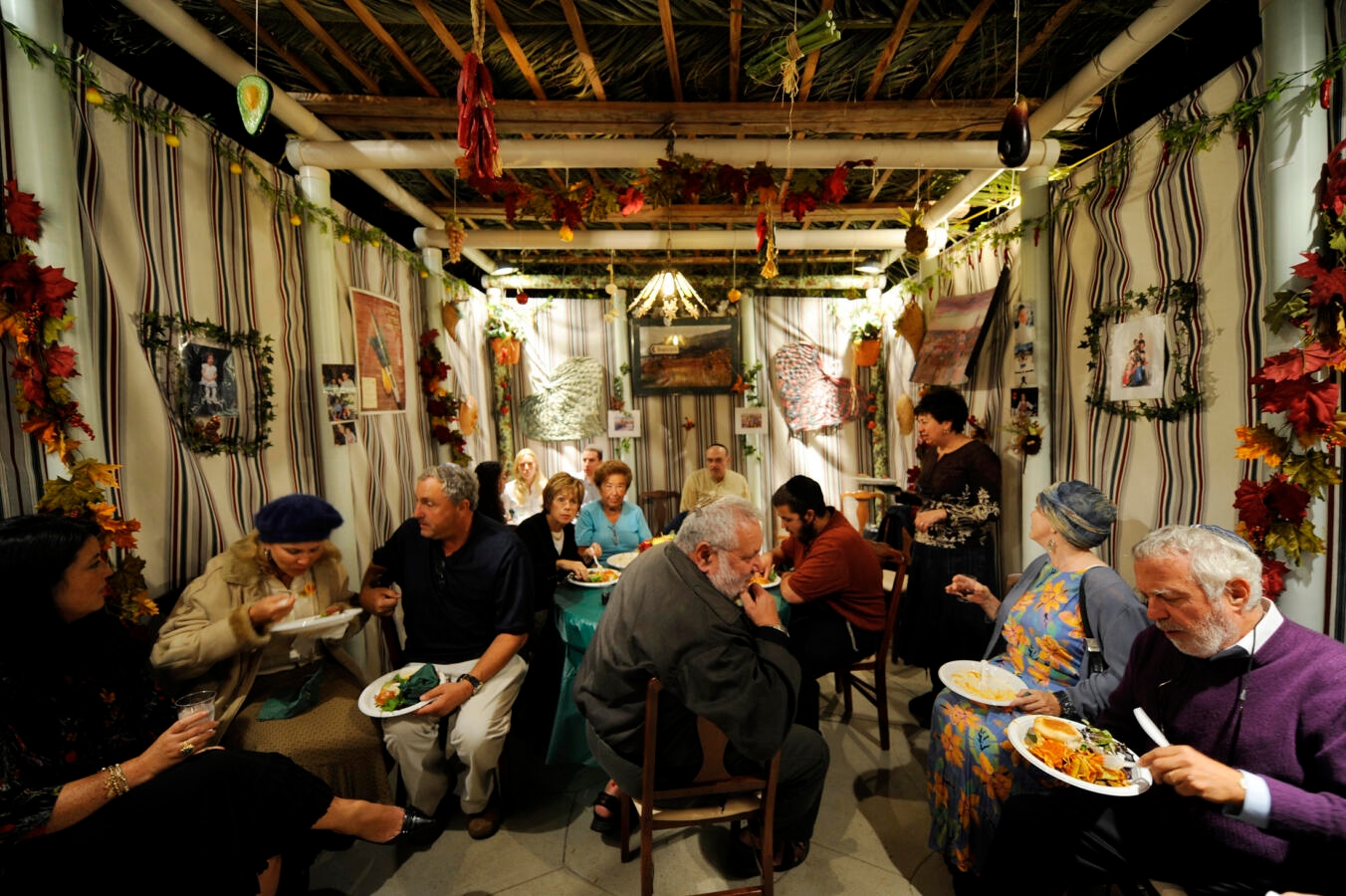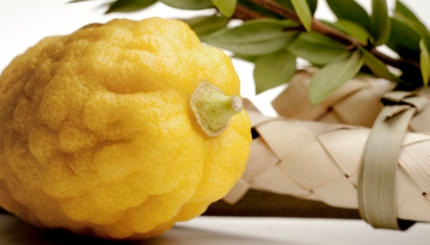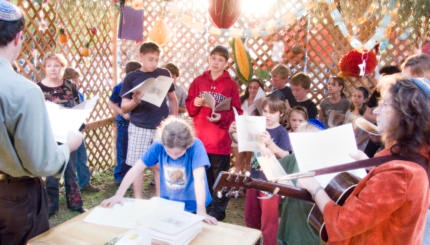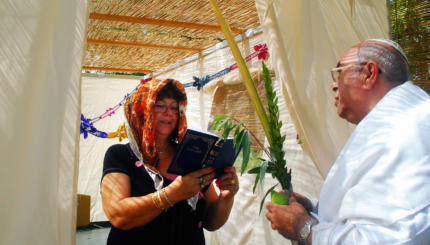Beginning five days after Yom Kippur, Sukkot is named after the booths or huts (sukkot in Hebrew) in which Jews are supposed to dwell during this week-long celebration. According to rabbinic tradition, these flimsy sukkot represent the huts in which the Israelites dwelt during their 40 years of wandering in the desert after escaping from slavery in Egypt. The festival of Sukkot is one of the three great pilgrimage festivals (chaggim or regalim) of the Jewish year.
Sukkot History
The origins of Sukkot are found in an ancient autumnal harvest festival. Indeed it is often referred to as hag ha-asif, “The Harvest Festival.” Much of the imagery and ritual of the holiday revolves around rejoicing and thanking God for the completed harvest. The sukkah represent the huts that farmers would live in during the last hectic period of harvest before the coming of the winter rains. As is the case with other festivals whose origins may not have been Jewish, the Bible reinterpreted the festival to imbue it with a specific Jewish meaning. In this manner, Sukkot came to commemorate the wanderings of the Israelites in the desert after the revelation at Mount Sinai, with the huts representing the temporary shelters that the Israelites lived in during those 40 years.
Sukkot At Home
Many of the most popular rituals of Sukkot are practiced in the home. As soon after the conclusion of Yom Kippur as possible, often on the same evening, one is enjoined to begin building the sukkah, or hut, that is the central symbol of the holiday. The sukkah is a flimsy structure with at least three sides, whose roof is made out of thatch or branches, which provides some shade and protection from the sun, but also allows the stars to be seen at night. It is traditional to decorate the sukkah and to spend as much time in it as possible. Weather permitting, meals are eaten in the sukkah, and the hardier among us may also elect to sleep in the sukkah. In a welcoming ceremony called ushpizin, ancestors are symbolically invited to partake in the meals with us. And in commemoration of the bounty of the Holy Land, we hold and shake four species of plants (arba minim), consisting of palm, myrtle, and willow (lulav), together with citron (etrog).

Help us keep Jewish knowledge accessible to millions of people around the world.
Your donation to My Jewish Learning fuels endless journeys of Jewish discovery. With your help, My Jewish Learning can continue to provide nonstop opportunities for learning, connection and growth.
Sukkot In the Community
As with all festivals, services play an important role in the communal celebration of Sukkot. In addition to special festival readings, including Psalms of Praise (Hallel), on Sukkot additional prayers are included in the service asking God to save us (hoshana, from which we get the English word hosanna). During the Hoshana prayers, congregants march around the synagogue sanctuary holding the lulav and etrog. The seventh and last day of the festival is called Hoshanah Rabba, the “Great Hoshana.”
Hol Hamoed (Intermediate Days) Sukkot
During the intermediate days of Sukkot, one is allowed to pursue normal activity. One is nonetheless supposed to hold and wave the lulav and etrog on a daily basis, eat one’s meals in the sukkah, and continue to dwell in the sukkah for the remainder of the holiday.
Sukkot Theology and Themes
The enforced simplicity of eating and perhaps also living in a temporary shelter focuses our minds on the important things in life and divorces us from the material possessions of the modern world that dominate so many of our lives. Even so, Sukkot is a joyful holiday and justifiably referred to as zeman simchateynu, the “season of our joy.”
etrog
Pronounced: ETT-rahg, Origin: Hebrew, a citron, or large yellow citrus fruit that is one of four species (the others are willow, myrtle and palm) shaken together as a ritual during the holiday of Sukkot.
lulav
Pronounced: LOO-lahv (oo as in boo), Origin: Hebrew, a bundle of branches representing three species — willow, myrtle and palm — which are shaken together with the etrog on Sukkot.
sukkah
Pronounced: SOO-kah (oo as in book) or sue-KAH, Origin: Hebrew, the temporary hut built during the Harvest holiday of Sukkot.
Sukkot
Pronounced: sue-KOTE, or SOOH-kuss (oo as in book), Origin: Hebrew, a harvest festival in which Jews eat inside temporary huts, falls in the Jewish month of Tishrei, which usually coincides with September or October.
Yom Kippur
Pronounced: yohm KIPP-er, also yohm kee-PORE, Origin: Hebrew, The Day of Atonement, the holiest day on the Jewish calendar and, with Rosh Hashanah, one of the High Holidays.



